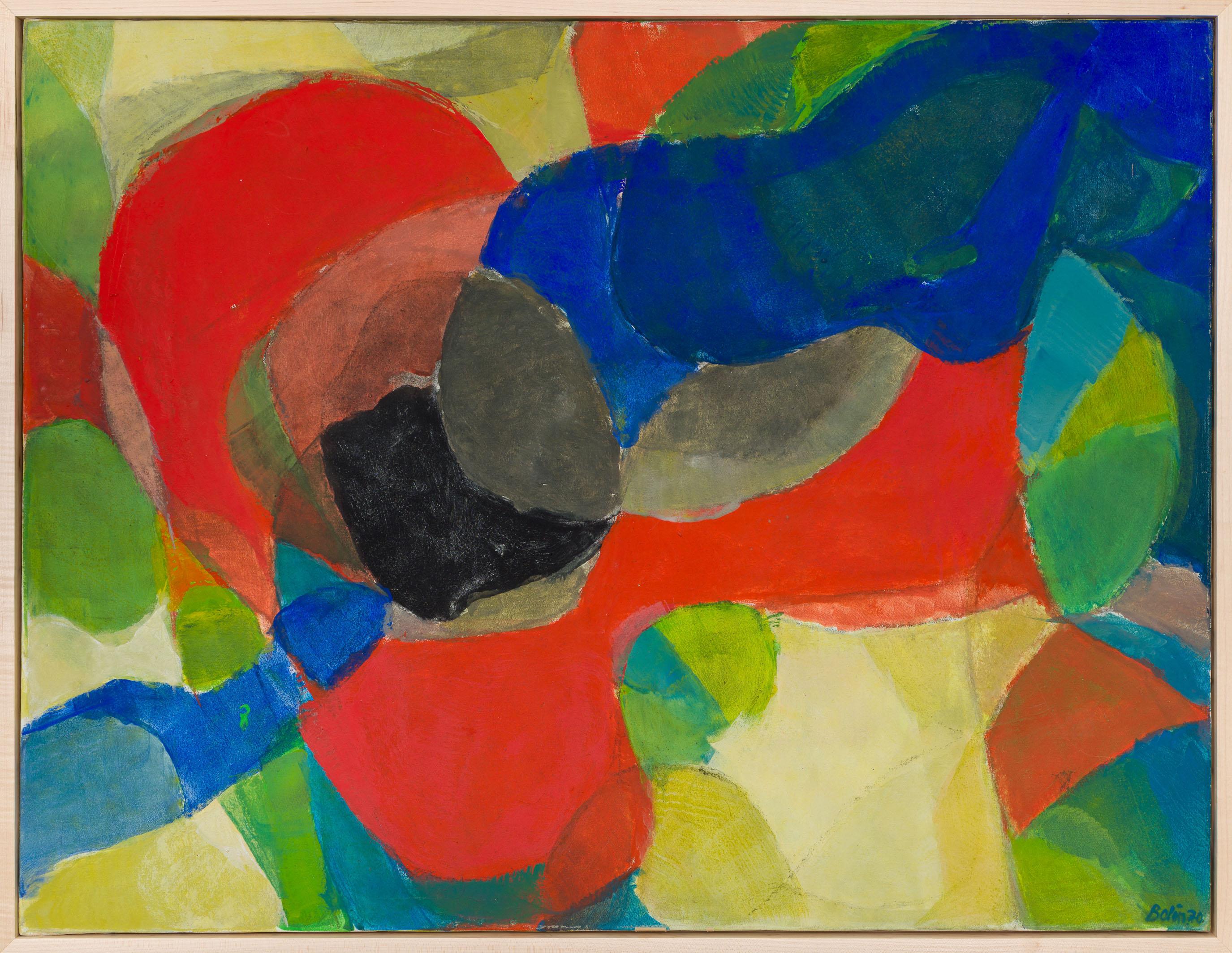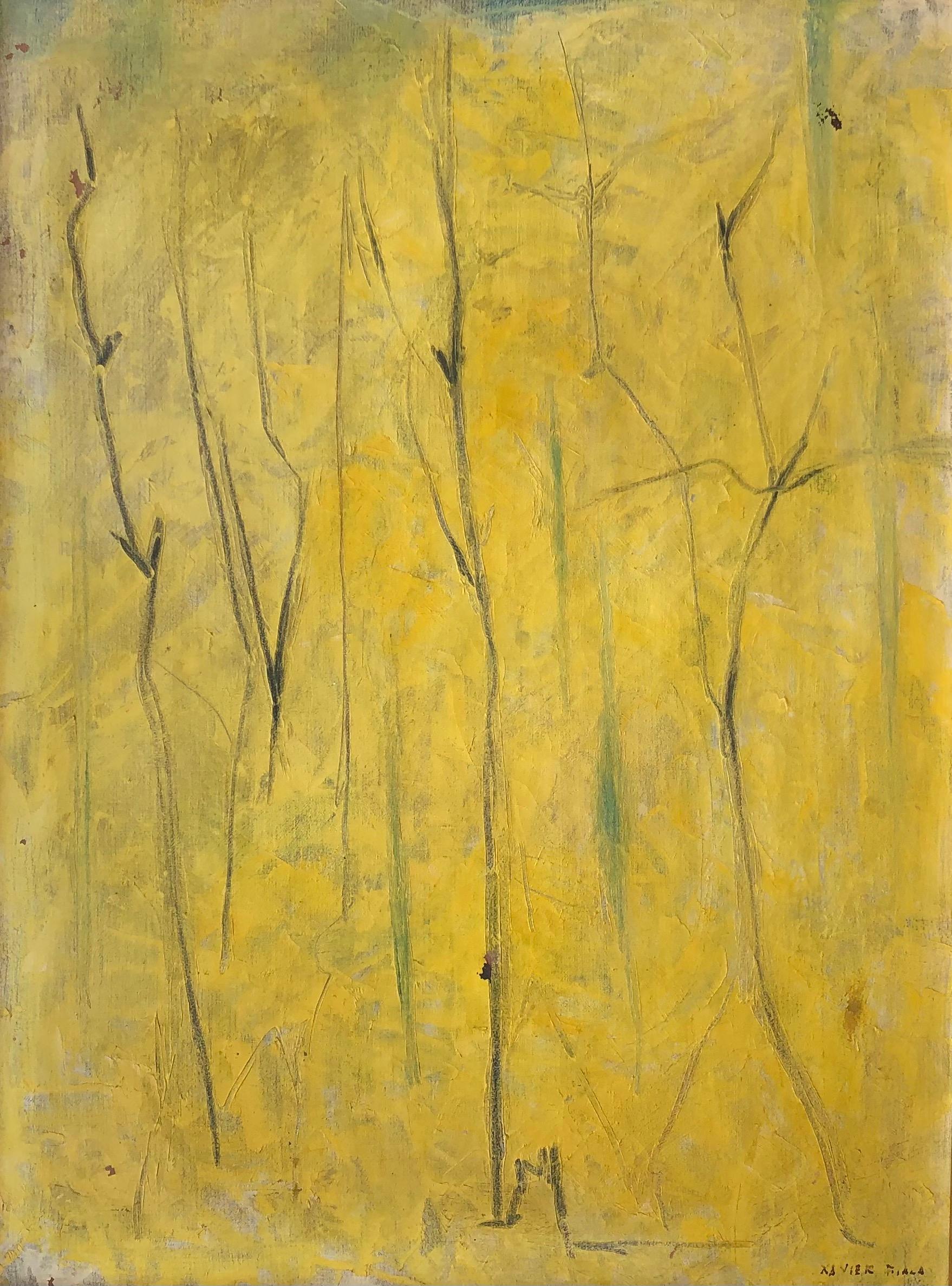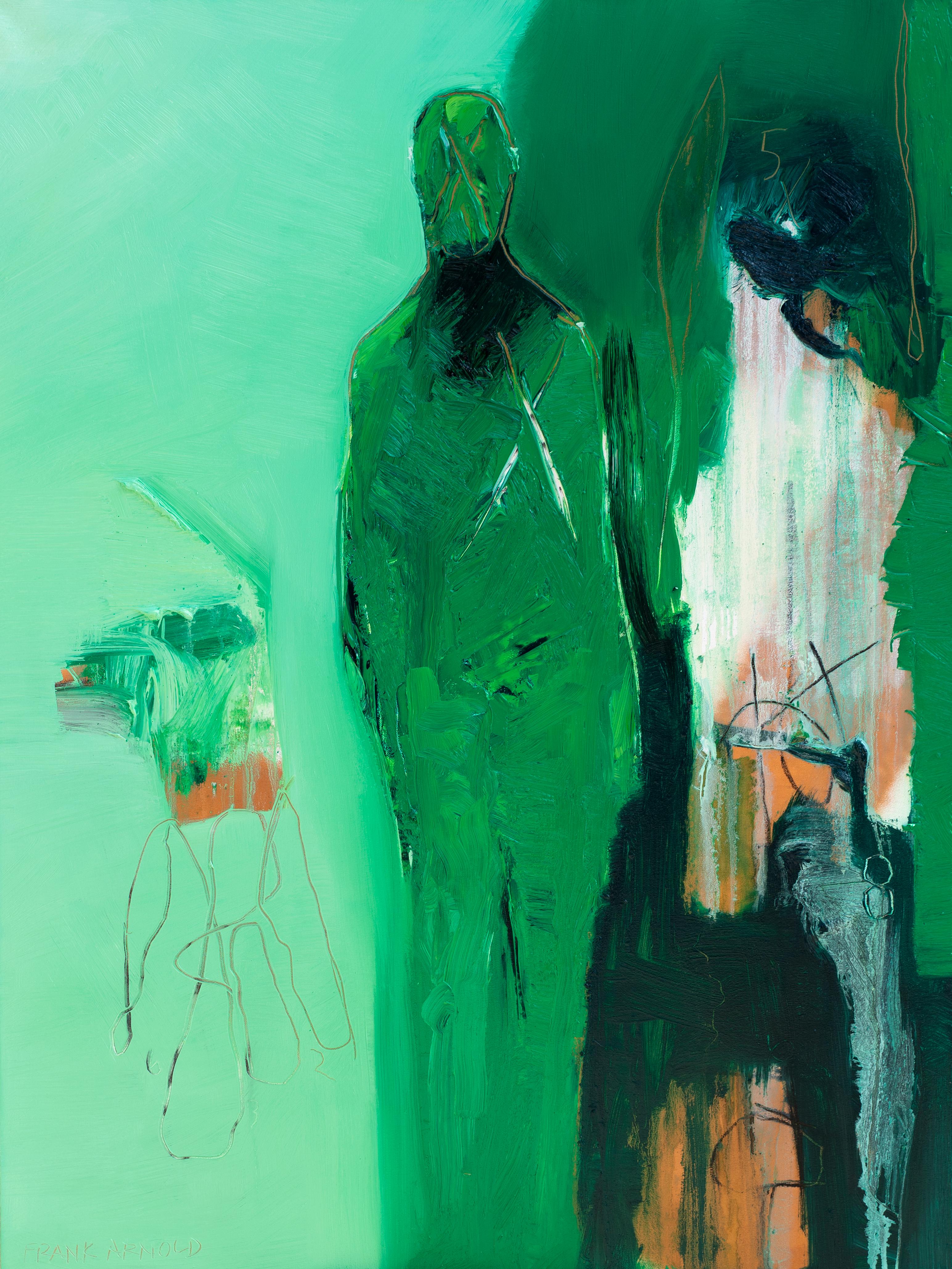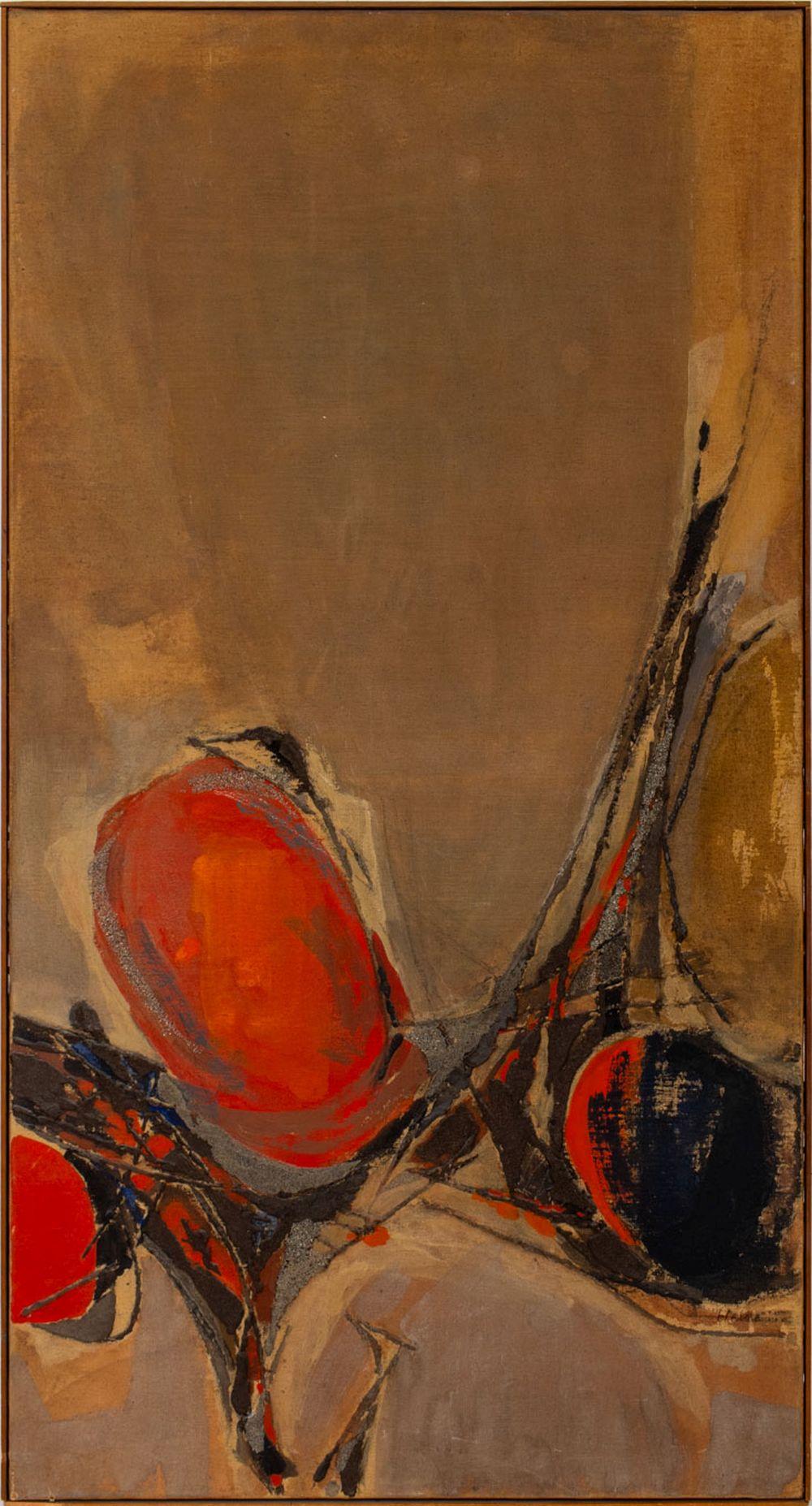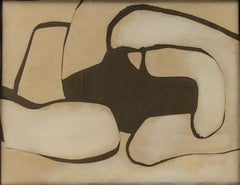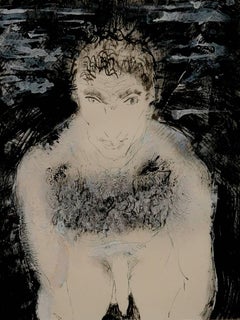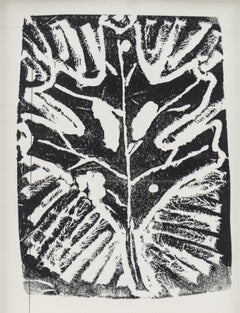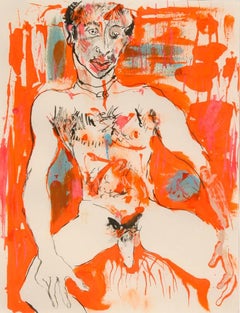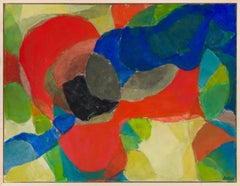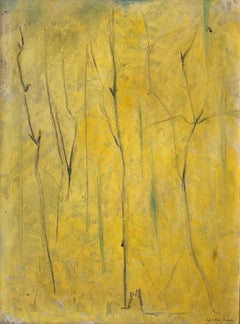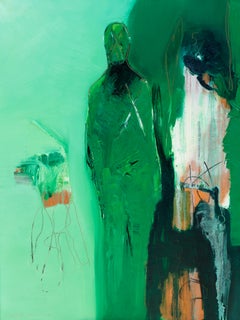Want more images or videos?
Request additional images or videos from the seller
1 of 9
Konrad CramerSpring1947
1947
$3,500
£2,718.90
€3,085.01
CA$5,004.34
A$5,474.87
CHF 2,859.42
MX$65,426.04
NOK 35,924.72
SEK 33,810.83
DKK 23,038.39
About the Item
Oil on masonite
Signed and dated, l.r.
This painting is offered by ClampArt, located in New York City.
About the artist:
Konrad Cramer grew up in Wurtzburg, Germany, and attended the Karlsruhe Academy. He was a member of Der Blaue Reiter—among one of the earliest modernist movements in Europe. Der Blaue Reiter, based in Munich, was founded by Wassily Kandinsky, Alexej von Jawlensky, and Franz Marc, among others.
In 1911, Cramer married Florence Ballin, an American artist studying in Munich. The couple moved to the United States, and eventually settled in Woodstock, New York, where they were soon active in a circle of artists that included Andrew Dasburg, Yasuo Kuniyoshi, and Elie Nadelman.
Cramer’s first exhibition in the United States took place in 1913 at the Arts Club, where he exhibited several of his “Improvisation” paintings. Cramer also found success as a photographer for the Works Progress Administration in the 1930s.
The artist was among one of the first to practice pure abstraction in painting in the United States. Later he returned to more representational imagery influenced by both abstraction and folk art. Cramer taught at the Woodstock School of Painting and the Dalton School in New York City. He remained active as a teacher and artist in Woodstock up until his death in 1963.
- Creator:Konrad Cramer (1888-1963, German)
- Creation Year:1947
- Dimensions:Height: 20 in (50.8 cm)Width: 16 in (40.64 cm)
- Medium:
- Movement & Style:
- Period:
- Condition:
- Gallery Location:New York, NY
- Reference Number:1stDibs: LU93232929961
About the Seller
5.0
Vetted Professional Seller
Every seller passes strict standards for authenticity and reliability
Established in 2000
1stDibs seller since 2018
268 sales on 1stDibs
Typical response time: 9 hours
- ShippingRetrieving quote...Shipping from: New York, NY
- Return Policy
More From This Seller
View AllComposition
By Conrad Marca-Relli 1
Located in New York, NY
This unique artwork by Conrad Marca-Relli is offered by CLAMP in New York City.
Category
1970s Contemporary Paintings
Materials
Canvas, Oil
Price Upon Request
Untitled
By Stuart Klein
Located in New York, NY
Acrylic on paper
Signed in pencil, verso
10.5 x 8 inches, sheet
21 x 18 inches, frame
This work is offered by ClampArt, located in New York City.
Price includes frame.
Category
Early 2000s Contemporary Figurative Paintings
Materials
Paper, Acrylic
Untitled
By Josh Smith
Located in New York, NY
Josh Smith
Untitled
2018
Xerox print (Edition of 50 + 10 APs)
11 x 8.5 inches
Category
2010s Abstract Prints and Multiples
Materials
Paper, Ink
$1,940
Untitled
By Stuart Klein
Located in New York, NY
Acrylic and acrylic ink on paper
Signed in pencil, verso
10.5 x 8 inches, sheet
18.5 x 16 inches, frame
This work is offered by ClampArt, located in New York City.
Price includes frame.
Category
Early 2000s Contemporary Figurative Paintings
Materials
Paper, Acrylic, Ink
Untitled
Located in New York, NY
Woodblock print
Signed in pencil, recto
12 x 9 inches
This artwork is offered by ClampArt, located in New York City.
Category
21st Century and Contemporary Abstract Abstract Prints
Materials
Color
Price Upon Request
Untitled
By Alexandra Huber
Located in New York, NY
Mixed media on paper
Signed and dated, l.r.
$1250.00, including framing
This work is offered by ClampArt, located in New York City.
Category
Early 2000s Contemporary Mixed Media
Materials
Paper, Mixed Media
You May Also Like
Spring
By Gustav Bolin
Located in Austin, TX
Waterline Fine Art, Austin, TX is pleased to present the following work:
Oil on canvas. Signed and dated lower right.
35 x 45.5 in.
36.5 x 47 in. (framed)
Custom framed in a solid...
Category
1970s French School Abstract Paintings
Materials
Canvas, Oil
$15,000
Spring
Located in Genève, GE
Work on canvas
Flush wooden frame
63.5 x 48 x 2.5 cm
Category
Mid-20th Century Abstract Abstract Paintings
Materials
Oil
Spring Fever
By Toma Yovanovich
Located in Buffalo, NY
An original mid century modern abstract expressionist painting by American artist Toma Yovanovich.
Toma Yovanovich (1931-2016) was a painter/printmaker whose work is in collect...
Category
1960s Abstract Abstract Paintings
Materials
Acrylic, Canvas
Growing
By Frank Arnold
Located in Fresno, CA
“Growing” is 40”x30” The impasto surface stages a predominance of bold greens in the shadowy figure. Frank Arnold’s paintings exhibit the highest quality materials for a truly archiv...
Category
2010s Abstract Abstract Paintings
Materials
Oil
$22,800
Untitled
By Sigismond Kolos-Vari
Located in PARIS, FR
Very beautiful double-sided abstract painting in a very good condition.
Category
1960s Abstract Abstract Paintings
Materials
Canvas, Oil
Abstract Composition
Located in Astoria, NY
Marc Heine (German/American, 1919-2007), Abstract Composition, Mixed Media on Canvas, signed lower right, wood frame. Image: 66.25" H x 35.25" W; frame: 67" H x 36" W x 1" D. Provena...
Category
Mid-20th Century Modern Abstract Paintings
Materials
Canvas, Found Objects, Mixed Media, Oil
